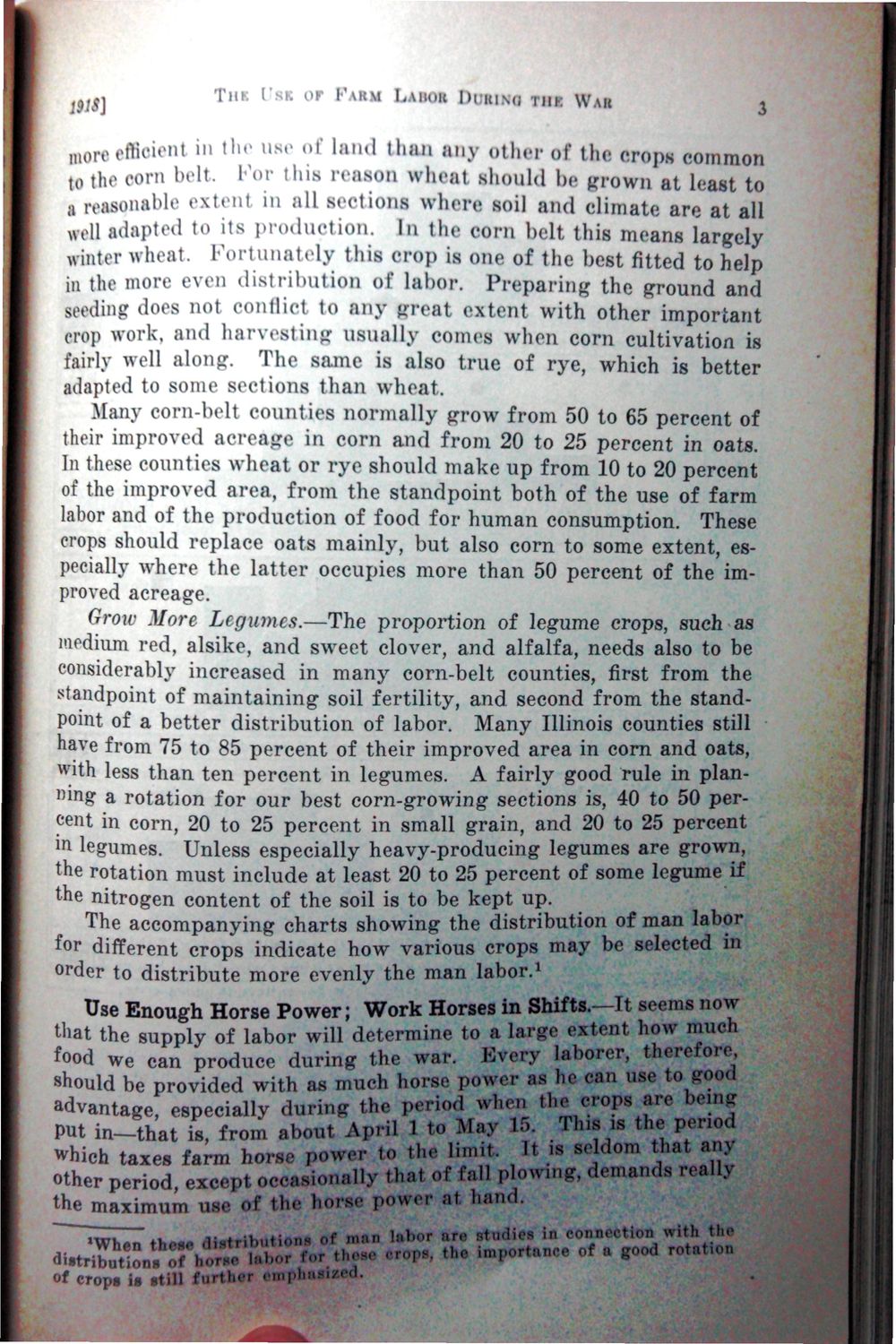| |
| |
Caption: War Publications - WWI Compilation 1923 - Article 28
This is a reduced-resolution page image for fast online browsing.

EXTRACTED TEXT FROM PAGE:
191S) m0IY THK I'SB or FARM LABOK DriuMj TIIK WAS 5 I ortii-iont in the u of land than any other of the crops common to the corn belt. For this reason wheat should be grown at least to a reasonable extent in all sections where soil and climate are at all well adapted to its production. In the corn belt this means largely winter wheat, fortunately this crop is one of the best fitted to help i» the more even distribution of labor. Preparing the ground and seeding does not contlict to any great extent with other important crop work, and harvesting usually comes when corn cultivation is fairly well along. The same is also true of rye, which is better adapted to some sections than wheat. Many corn-belt counties normally grow from 50 to 65 percent of their improved acreage in corn and from 20 to 25 percent in oats. In these counties wheat or rye should make up from 10 to 20 percent of the improved area, from the standpoint both of the use of farm labor and of the production of food for human consumption. These crops should replace oats mainly, but also corn to some extent, especially where the latter occupies more than 50 percent of the improved acreage. Grow More Legumes.—The proportion of legume crops, such as medium red, alsike, and sweet clover, and alfalfa, needs also to be considerably increased in many corn-belt counties, first from the standpoint of maintaining soil fertility, and second from the standpoint of a better distribution of labor. Many Illinois counties still have from 75 to 85 percent of their improved area in corn and oats, with less than ten percent in legumes. A fairly good rule in planning a rotation for our best corn-growing sections is, 40 to 50 percent in corn, 20 to 25 percent in small grain, and 20 to 25 percent in legumes. Unless especially heavy-producing legumes are grown, the rotation must include at least 20 to 25 percent of some legume if the nitrogen content of the soil is to be kept up. The accompanying charts showing the distribution of man labor for different crops indicate how various crops may be selected in 1 order to distribute more evenly the man labor. Use Enough Horse Power; Work Horses in Shifts. -It seems now that the supply of labor will determine to a Urge e: tent how much food we can produce during the war. Btery laborer, therefore, should be provided with as much horse power as he can use to good advantage, especially during the period when the crops are being put i n - t h a t is, from about April 1 to May 15. This is the period which taxes farm horse power to the limit It is seldom that anj other period, except occasionally thai of fall plowing, demands really use re studies in connection with thi •When these distributions of men labor the importance of B good rotation <J«»tribution» of le labor for tho rop of crope is ttill •'' emphasized.
| |